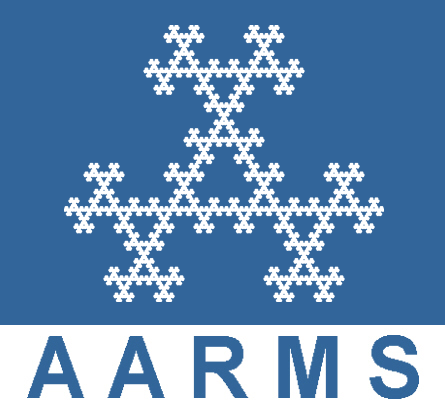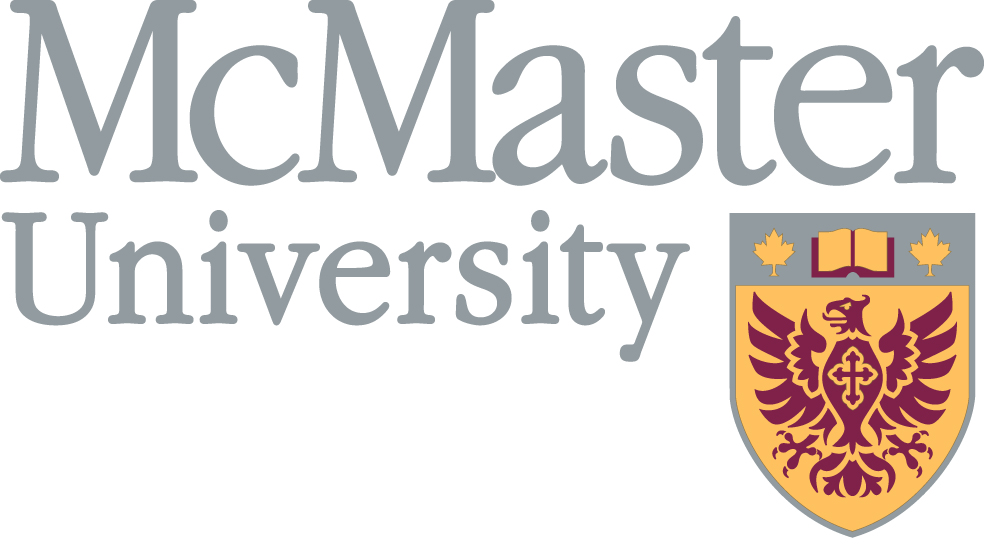Réunion d'hiver SMC 2016
Niagara Falls, 2 - 5 décembre 2016
Systèmes intégrables et applications
Org: Stephen Anco (Brock University) et Gino Biondini (University of Buffalo)
[PDF]
Org: Stephen Anco (Brock University) et Gino Biondini (University of Buffalo)
[PDF]
- MARK ABLOWITZ, University of Colorado, Boulder
Rogue waves in water and light [PDF]
-
Large amplitude rogue waves can be generated by the interaction of two oblique interacting waves in deep water. A `rogue’ condition is found which links the angle of interaction with the group velocities of these waves. With this condition the analysis is reduced to a coupled nonlinear Schrodinger (CNLS) system. For a range of interactions this CNLS system exhibits many more extreme events than does the one-dimensional scalar NLS system. Elliptically polarized birefringent light waves also satisfy a CNLS system. The generation of rogue waves is frequently associated with modulation instability. It is often expected that since the CNLS equations exhibit larger growth rates they would produce more rogue events than their scalar counterparts. This is found to occur only when both equations are focusing. When at least one component is defocusing, the CNLS equations may still exhibit larger growth rates, compared to the scalar system, but that does not necessarily result in more or larger events. The nature of the rogue event will also be discussed.
- STEPHEN ANCO, Brock University
Integrable multi-component peakon equations from a modified AKNS scheme [PDF]
-
The standard AKNS scheme for generating integrable evolution systems is modified to obtain integrable peakon systems. In the simplest case, the modified scheme yields a large family of integrable multi-component peakon equations, together with their recursion operators, symmetries, conservation laws, and bi-Hamiltonian structure.
- JINBING CHEN, Southeast University
The backward Neumann system to the construction of algebro-geometric solutions of the negative-order KdV hierarchy [PDF]
-
In this talk, the backward Neumann system is applied to deduce algebro-geometric solutions for the negative-order KdV (nKdV) hierarchy. From a symmetric constraint, the nKdV hierarchy is reduced to a class of backward Neumann systems that separate its temporal and spatial variables. The backward Neumann systems are shown to be integrable in the Liouville sense, whose involutive solutions yield the finite parametric solutions of nKdV hierarchy. The negative-order Novikov equation is attained to specify a finite-dimensional invariant subspace of nKdV flows. Under the Abel-Jacobi variable, the nKdV flows are integrated with Abel-Jacobi solutions on the Jacobi variety of a Riemann surface. Finally, the Riemann-Jacobi inversion of Abel-Jacobi solutions is studied, by which some algebro-geometric solutions to the nKdV hierarchy are derived.
- ALEXEI CHEVIAKOV, University of Saskatchewan
A Recursion Formula for the Construction of Local Conservation Laws of Differential Equations [PDF]
-
A simple formula is presented that, for any given local
divergence-type conservation law of a system of partial or ordinary
differential equations (PDE, ODE), generates a divergence expression
involving an arbitrary function of all independent variables. In the
cases when the new flux vector is a local expression inequivalent to the
initial local conservation law flux vector, a new local conservation law
is obtained. For ODEs, this can yield additional integrating factors.
Examples of systems of differential equations are presented for which the
proposed new relationship yields important local conservation laws
starting from basic ones. Examples include a nonlinear ODE and several
fundamental physical PDE models, in particular, general classes of
nonlinear wave and diffusion equations, vorticity-type equations, and a
shear wave propagation model in hyper-viscoelastic fiber-reinforced
solids.
- GUO DENG, State University of New York at Buffalo
Small dispersion limits of integrable nonlinear PDEs with cosine initial conditions [PDF]
-
We employ the WKB method to study the scattering problem of the Korteweg-deVries equation in order to analytically characterize the Zabusky-Kruskal numerical experiment. We obtain explicit asymptotic expressions for the number of solitons as well as their amplitudes. We confirm the results by comparing them with recent shallow water experiments. We then generalize our approach to study the defocusing nonlinear Schrodinger equation, and we apply the corresponding results to characterize some recent experiments in nonlinear optics. This is joint work with G. Biondini and S. Trillo.
- MICHEL GRUNDLAND, Université du Québec à Trois-Rivières
Immersion formulas obtained via the generalized symmetry approach [PDF]
-
This talk is devoted to a study of the connections between three different analytic descriptions for the immersion functions of 2D soliton surfaces corresponding to the following three types of symmetries: gauge symmetries of the linear spectral problem, conformal transformations in the spectral parameter and generalized symmetries of the associated integrable system. We present the necessary and sufficient conditions under which the immersion formulas associated with these symmetries are linked by gauge transformations. We illustrate the theoretical results by examples involving the $\mathbb{C}P^{(N-1)}$ sigma model.
- DANIEL KRAUS, Brock University
Hamiltonian structure of multi-peakon sector of the FORQ (modified CH) equation [PDF]
-
There has been much recent interest in the FORQ (modified CH) equation as an integrable system with multi-peakon solutions. However, unlike all of the other known integrable multi-peakon equations --- Camassa-Holm, Degasperis-Procesi, Novikov --- no Hamiltonian structure has yet been found for its multi-peakon sector.
In this talk, we explain the basic obstacle and derive a Hamiltonian structure for multi-peakon solutions but at the cost of working in a distributional setting which differs from the standard weak formulation of the equation.
- SITAI LI, State University of New York at Buffalo
Soliton solutions of Maxwell-Bloch equations with non-zero background [PDF]
-
We present several exact solutions of the Maxwell-Bloch equations for non-degenerate two-level systems with non-zero background fields, derived by formulating the inverse scattering transform for systems with finite, non-zero boundary conditions for the optical field. We obtain the general form of N-soliton solutions for both the optical field and the density matrix. We then discuss in particular one-soliton solutions, both in the case of inhomogeneous broadening and in the sharp-line limit, and we analyze their properties. We also consider various limiting cases, which result in several additional solutions, such as time-periodic solutions and rational solutions. These soliton solutions, all of which are novel to the best of our knowledge, are the analogue for Maxwell-Bloch systems of the Kuznetsov-Ma solitons, Tajiri-Watanabe solitons, Akhmediev breathers and Peregrine solution of the focusing nonlinear Schrodinger equation. This is joint work with G. Biondini, I. Gabitov and G. Kovacic.
- PETER MILLER, University of Michigan
Semiclassical Aspects of the Three-Wave Resonant Interaction [PDF]
-
I will describe joint work with Robert Buckingham and Robert Jenkins to analyze the initial-value problem for the three-wave resonant interaction equations, an integrable system governing three quadratically coupled fields, in an appropriate semiclassical limit. As the system is non-dispersive, long time limits do not reveal any particular simplification of the dynamics, but the semiclassical limit allows for the practical calculation of the interaction process. I will describe the construction of an appropriate semiclassical soliton ensemble and show how such ensembles can be used to understand the behavior of resonant triads in a wide variety of systems.
- ALEXANDER ODESSKI, Brock University
A family of integrable evolution equations of third order [PDF]
-
We construct a family of integrable equations of the form $v_t=f(v,v_x,v_{xx},v_{xxx})$ such that f is a transcendental function in $v,v_x,v_{xx}$. This family is related to the Krichever-Novikov equation by a differential substitution. Our construction of integrable equations and the corresponding differential substitutions involves geometry of a family of genus two curves and their Jacobians.
Joint work with M. Babela.
- GEORGE PAPAMIKOS, University of Reading
On Darboux transformations of the vector sine-Gordon equation and related structures [PDF]
-
We present the vector sine-Gordon equation (vSG) together with its Lax representation and its reduction
group. We are interested in Darboux transformations invariant under the same reduction group and the corresponding Backlund/symmetry transformations of the vSG. We use the Darboux transformation to construct a related vector Yang-Baxter map, an integrable partial difference equation and a vector differential-difference equation on the sphere. We will briefly discuss the dressing method and the construction of soliton solutions for the vSG.
This is a joint work with Prof J.P. Wang (Kent) and Prof A.V. Mikhailov (Leeds)
- BARBARA PRINARI, University of Colorado Colorado Springs
Discrete solitons for the focusing Ablowitz-Ladik equation with non-zero boundary conditions via inverse scattering transform [PDF]
-
Soliton solutions of the focusing Ablowitz-Ladik (AL) equation with nonzero boundary conditions at infinity are derived within the framework of the inverse scattering transform (IST). After reviewing the relevant aspects of the direct and inverse problems, explicit soliton solutions will be discussed which are the discrete analog of the Tajiri-Watanabe and Kutznetsov-Ma solutions to the focusing NLS equation on a finite background. Then, by performing suitable limits of the above solutions, discrete analog of the celebrated Akhmediev and Peregrine solutions will also be presented. These solutions, which had been recently derived by direct methods, are obtained for the first time within the framework of the IST, thus providing a spectral characterization of the solutions and a description of the singular limit process.
- ZHIJUN QIAO, University of Texas
Negative order integbale hierarchy and soliton equations [PDF]
-
In this talk, I will show how to generate a negative order integrable hierarchy from the Lenard recursion operators, and then find the Lax pair for the entire hierarchy to guarantee the integrability. Interesting thing is that the peakon equation is coming from the negative hierarchy. I will show some amazing examples including the CH, Negative KdV, two-component short pulse equations etc. Particularly, real and complex short pulse equations can be derived from some earlier work I did in 90's.
- ELENA RECIO, Universidad de Cadiz \& Brock University
A general family of multi-peakon equations [PDF]
-
A general family of peakon equations is considered, involving two
arbitrary functions of the wave amplitude and the wave gradient. This
family contains all of the known breaking wave equations, including the
integrable ones: Camassa-Holm equation, Degasperis-Procesi equation,
Novikov equation, and FORQ/modified Camassa-Holm equation. All of the
equations in the general family are shown to possess weak solutions
given by multi-peakons. The most general subfamily of these equations
that possess the Hamiltonian structure shared by the Camassa-Holm and
FORQ/modified Camassa-Holm equations is derived. As examples,
one-parameter families of generalized CH and FORQ/modified Camassa-Holm
equations with multi-peakon solutions and a Hamiltonian structure are
presented. Wave breaking criteria are outlined for these equations.
- QIAO WANG, State University of New York at Buffalo
Whitham modulation theory for the Kadomtsev-Petviashvili equation [PDF]
-
In this talk we present the derivation of the genus-1 KP-Whitham system, namely the Whitham modulation equations for both variants of the Kadomtsev-Petviashvili (KP) equation. We also discuss the basic properties of the KP-Whitham system and show how it can be used to study the stability of the genus-1 solutions of the KP equation. This is joint work with M.J. Ablowitz and G. Biondini.





